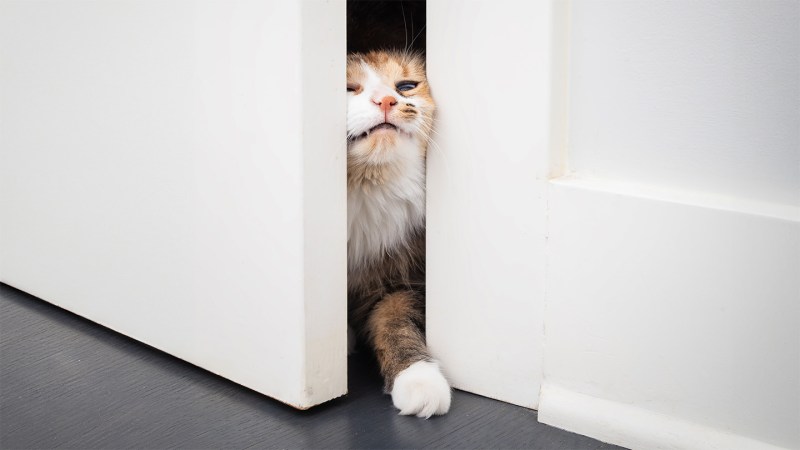Cats are liquid

Directions for teachers:
To engage students before reading the article, have them answer the “Before Reading” questions as a warmup in class. Then, instruct students to read the online Science News article “At-home experiments shed light on cats’ liquid behavior” and answer the “During Reading” questions. As an optional extension, instruct students to answer “After Reading” questions as a class discussion or as homework.
Directions for students:
Answer the first set of questions as instructed by your teacher before reading the article. Then, read the online Science News article “At-home experiments shed light on cats’ liquid behavior” and answer the remaining questions as directed by your teacher.
Before Reading
1. Watch this short video showing an at-home experiment studying cat behavior. Briefly summarize what this simple experiment is attempting to investigate. Identify two independent variables – or variables that the experimenter manipulates – to determine whether and how these impact other variables. Which is the dependent variable, or the factor that changes in response to the independent variable?
This study investigates a cat’s initiative and ability to hop through holes that are different widths and heights. Answers will vary, but examples of independent variables include the width and height of the cardboard cutouts. The dependent variable is whether the cat attempts to and/or successfully fits through a particular cutout.
2. How did the cat’s performance in this video surprise you? If it didn’t surprise you, describe specific observations you’ve made about cats before today that would have led you to expect such a performance. On the other hand, if the cat’s performance did surprise you, explain what part of the cat’s performance was unexpected and why.
Answers will vary.
During Reading
1. What was the inspiration for this experiment with cats?
The scientist studied dogs to see if they were capable of self-representation and were aware of their body size. Once that study was complete, the scientist decided to study cats in the same way.
2. Using the figure of the two types of test panels, state the independent variable for each panel of cutouts. What about the cutout openings is remaining constant in each panel?
One panel had cutouts of identical width but decreasing heights. So height would be the independent variable. The other panel had cutouts of the same height but increasing widths. Here, width would be the independent variable.
3. Why did the scientists bring a portable lab to households of cat owners to perform the experiment? How many cat households participated? How many cats participated and finished the experiment?
Scientists were trying to minimize the stress they put on the cats during the experiment (to eliminate confounding factors in their study). Twenty-nine households took part. Out of 38 cats, 30 finished the experiment.
4. How many cats hesitated before squeezing through the shortest hole on the panel of openings with varying height? How many cats hesitated when squeezing through the narrowest opening on the other panel?
The shortest panel cutout made 22 cats pause. Only 8 cats paused before approaching the narrowest opening.
5. What claim did Péter Pongrácz and his team make based on these cat data?
Cats tend to hesitate when they have to hunch down to squeeze through a low opening. But even if they can’t fit through a narrowest opening, they’ll give it a try.
6. What reason did Pongrácz give for the cats’ differing attitude towards narrow cutouts vs. low-to-the-ground cutouts?
Pongrácz speculated that the cats’ reluctance to squeeze through low-to-the-ground cutouts may be because the cutout obscures their view of the other side, and therefore, leave them vulnerable to unseen dangers.
7. Based on this study’s results, what does Pongrácz conclude about the cats’ ability to “visualize?”
Pongrácz concludes that cats can visualize their body shape and size when facing obstacles such as those described in this study.
After Reading
1. Work with a partner to discuss the experimental design of the study by Pongrácz and his team, comparing it to the at-home experiment in the video from the Before Reading section. Take note of how independent variables are tested differently in these experiments. Which study has a better design? Explain why.
The study by Pongrácz and his team isolated each independent variable with two separate cutout panels. The video experiment had cutouts of varying width and height in the same panel. The results of the video’s at-home experiment won’t be able to help determine which variable — height or width— may be factored more into the cat’s decision about whether to try and step through the cutout.